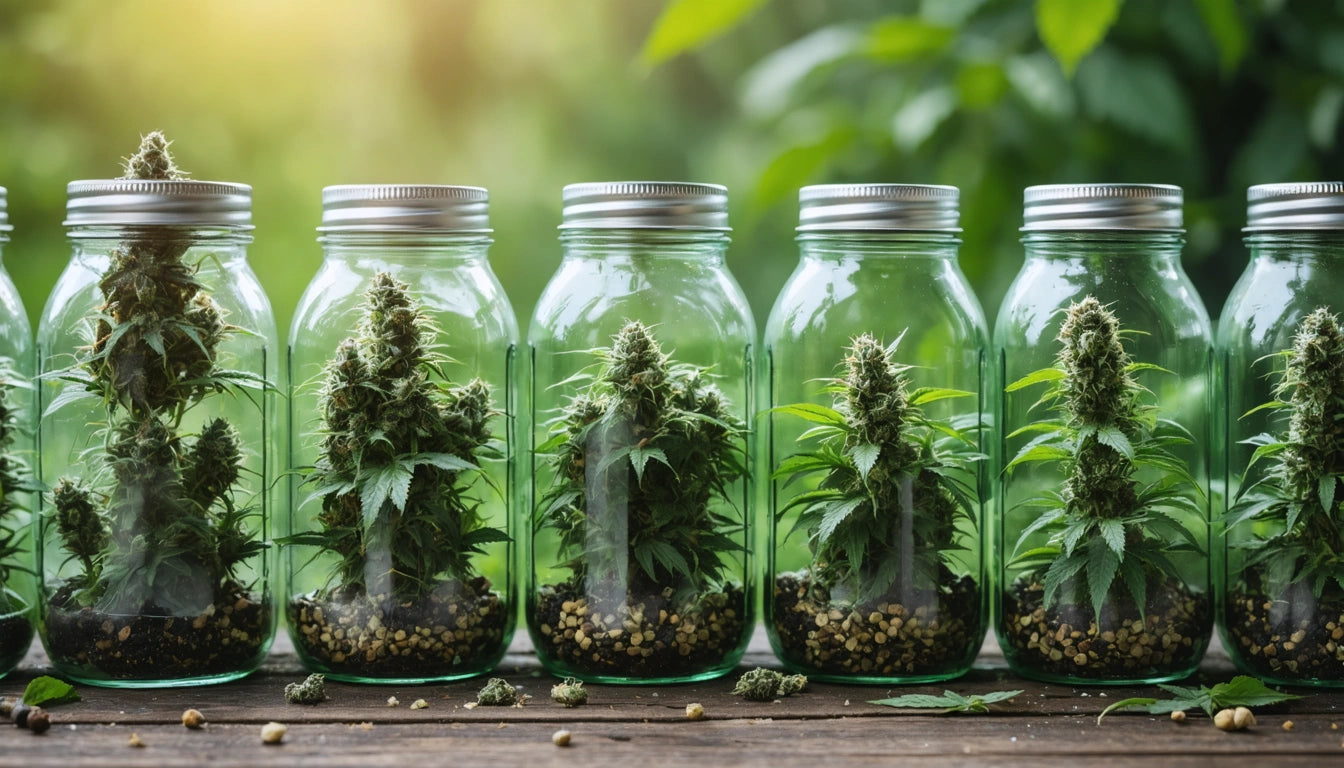Table of Contents
Exploring the Top Strains in Schedule 1: Productivity and Renaming Possibilities
With cannabis remaining federally classified as a Schedule 1 substance despite state-level legalizations, understanding the best strains within this classification has become crucial for both consumers and businesses. This guide explores the top Schedule 1 strains known for enhancing productivity, along with the complexities of strain naming and rebranding possibilities within regulatory frameworks.
Understanding Schedule 1 Classification and Cannabis Strains
Schedule 1 substances are defined by the federal government as having no accepted medical use and a high potential for abuse. Despite this classification, cannabis contains numerous strains with distinct chemical profiles and effects, many of which are utilized for specific purposes including enhancing productivity, creativity, and focus.
The contradiction between federal classification and state-level legalization creates a complex landscape for cannabis businesses and consumers alike. While cannabis remains in Schedule 1 federally, certain strains classified under Schedule 1 have gained recognition for their specific effects and benefits.
Top Strains in Schedule 1 for Productivity and Focus
Sativa-Dominant Strains for Daytime Use
The best daytime strains for productivity typically feature sativa-dominant genetics that provide energizing, focus-enhancing effects without excessive sedation. These strains often contain terpene profiles rich in limonene and pinene, which contribute to alertness and mental clarity.
- Jack Herer: Named after the cannabis activist, this strain is renowned for its clear-headed focus and creativity boost
- Durban Poison: A pure sativa with energizing properties that help maintain productivity throughout the day
- Green Crack: Despite its controversial name (which illustrates the renaming issue), this strain provides sharp energy and focus
- Sour Diesel: Known for its cerebral effects that help with task completion and problem-solving
According to our comprehensive guide to the best cannabis strains, productivity-enhancing varieties typically contain moderate THC levels (15-22%) balanced with complementary terpenes that minimize anxiety or overstimulation.
Balanced Hybrids for Sustained Productivity
For sustained productivity without the potential crash associated with pure sativas, many users turn to balanced hybrid strains. These top hybrid varieties offer a middle ground that supports focus while maintaining physical comfort during extended work sessions.
Popular balanced hybrids for productivity include:
- Blue Dream: Offers gentle cerebral stimulation with mild body relaxation
- XJ-13: Combines mental clarity with stress reduction
- Chemdawg: Provides creative energy with moderate physical effects
When working with these strains, proper measurement is essential for consistent dosing. Using precision digital scales for accurate measurement helps consumers maintain the ideal dosage for productivity without overconsumption that might hinder performance.
Renaming Considerations for Schedule 1 Strains
The question of whether you can rename strains in Schedule 1 has both marketing and regulatory dimensions. From a strict regulatory perspective, there are no federal guidelines specifically prohibiting the renaming of cannabis strains, as the entire plant remains federally illegal regardless of strain name.
Strategic Renaming Approaches
Cannabis businesses often consider renaming strains for several reasons:
- Moving away from names that reference illicit substances or activities
- Creating proprietary branding that distinguishes their products
- Developing more medically appropriate terminology for therapeutic applications
- Addressing cultural sensitivity concerns with certain legacy strain names
When approaching strain renaming, businesses should consider both marketing objectives and consumer education. Transparency about genetic lineage helps maintain trust with knowledgeable consumers while creating new naming conventions that better reflect the product's effects and characteristics.
Compliance Strategies for Cannabis Businesses
For businesses operating in state-legal markets while navigating federal Schedule 1 classification, several compliance strategies can help mitigate risk while effectively marketing cannabis strains:
Documentation and Consistency
Maintaining thorough documentation of strain genetics, testing results, and naming conventions helps demonstrate good faith compliance with state regulations. This documentation should include:
- Genetic lineage and breeding records
- Cannabinoid and terpene profiles
- Any name changes and rationale
- Batch tracking information
Consistency across marketing materials, packaging, and point-of-sale systems helps avoid confusion and demonstrates professional business practices. Comprehensive strain guides can help businesses maintain this consistency while educating consumers.
State-Specific Considerations
Each state with legal cannabis has its own regulations regarding strain naming, marketing, and product descriptions. Some jurisdictions have specific restrictions on naming that might:
- Prohibit names appealing to minors
- Restrict medical claims in recreational markets
- Require specific disclosures about effects
- Mandate THC warning symbols regardless of strain name
Before implementing any strain renaming strategy, businesses should consult with cannabis compliance experts familiar with their specific state regulations.
The Future of Strain Naming in a Changing Regulatory Landscape
As cannabis regulation evolves, strain naming conventions are likely to become more standardized and professionally oriented. The industry is gradually moving toward naming systems that better reflect:
- Cannabinoid and terpene profiles rather than subjective effects
- Genetic lineage and breeding information
- Intended use cases (productivity, relaxation, creativity)
- Growing characteristics and cultivation requirements
This evolution parallels what we've seen in other industries that transitioned from prohibition to regulation, such as alcohol after the repeal of Prohibition. The most successful businesses will be those that balance authentic cannabis culture with professional branding that resonates with both experienced consumers and newcomers to legal cannabis.
As federal policy potentially shifts, businesses that have already adopted more mainstream naming conventions may find themselves better positioned for national markets. Meanwhile, those focusing on the best strains in Schedule 1 for specific purposes like productivity will continue to build consumer loyalty through consistent effects and quality, regardless of what names these strains ultimately carry.











Leave a comment
All comments are moderated before being published.
This site is protected by hCaptcha and the hCaptcha Privacy Policy and Terms of Service apply.